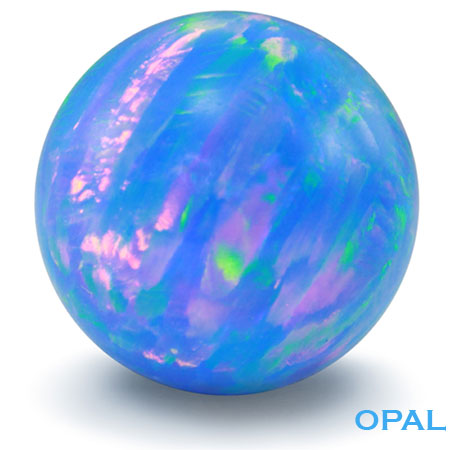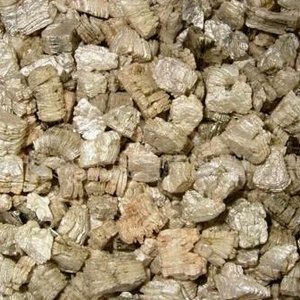PLATINUM MINING
DESCRIPTION :
Platinum is a heavy, malleable, ductile, highly inert, silverish-white transition metal, belonging to group 10 of the periodic table. As one of the rare elements in Earth's crust, it has six naturally occurring isotopes, making it a chemical element.
* PLATINUM MINING AND EXTRACTION METHODS
* PLATINUM REFINING AND CHALLENGES
* INTERESTING FACTS ABOUT PLATINUM
OCCURRENCE IN NATURE :
Platinum is found in certain nickel and copper ores, as well as in some natural deposits. With its high value and status as a precious metal, only a few hundred tonnes are produced annually due to its scarcity in the Earth's crust. Its low reactivity grants it remarkable resistance to corrosion, even at high temperatures, thus earning it the label of a noble metal. Consequently, platinum is often found in a chemically pure state. While it occurs naturally in the alluvial sands of various rivers, its earliest known use dates back to pre-Columbian South American civilizations. References to platinum appear in European writings from the early 16th century, with credit for its modern rediscovery attributed to Antonio de Ulloa.
HISTORY :
Platinum wasn't observed by Western scientists until 1735. It is obtained as a by-product of nickel mining operations in the form of the mineral sperrylite (PtAs2). The Spanish were the first Europeans to encounter the metal, although they found it to be a nuisance due to its similar appearance to silver. They referred to the metal as "Platina," the Spanish word for silver. Although studied by a number of chemists in the mid-18th century, François Chabaneau was the first to produce a pure sample of platinum metal in 1783. In 1801, English scientist William Wollaston invented a method for adequately extracting the metal from ore. The growing demand for the metal led to the discovery of large deposits in the Ural Mountains in 1824 and Canada in 1888. This ultimately led to geologist Hans Merensky's discovery of the largest platinum deposit on Earth.
USES OF PLATINUM :
1. Industrial Applications: Platinum finds utility in various industrial sectors, notably in catalytic converters for vehicles, electrical contacts, thermocouples, and dental equipment.
2. Jewelry Use: Renowned for its enduring strength and captivating sheen, platinum is a favored choice for crafting fine jewelry, particularly engagement rings and other exquisite pieces.
3. Investment: Platinum serves as a viable investment avenue through bars, coins, and exchange-traded funds (ETFs), attracting investors seeking stability and potential growth.
4. Medical Use: Within the medical realm, platinum plays a pivotal role in chemotherapy drugs, pacemakers, and innovative cancer treatments, contributing to advancements in healthcare.
5. Automotive Innovation: Platinum's significance extends to automotive engineering, featuring in crucial components such as spark plugs, fuel cells, catalytic converters, and exhaust gas recirculation systems, enhancing vehicle performance and environmental sustainability.
PLATINUM MINING AND EXTRACTION METHODS :
The mining of platinum ores is similar to gold mining. The platinum orebody forms a thin, tabular reef covering a vast area, enabling a progressive mining method involving drilling the reef and blasting it to advance the face. This method combines increased industrialization and trackless-mining methods in steps. However, platinum mining differs from gold mining in several ways. Platinum reefs are igneous rocks that intruded into the uplifted area as molten volcanic magma rose from beneath the Earth's crust, later cooling and solidifying. This phenomenon created a controlled layering environment distinct from that of gold mines.
PLATINUM REFINING AND CHALLENGES :
The refining processes for precious metals have undergone significant advancements in recent years. In the older or classical method, the Platinum Group Metal (PGM) concentrate was initially roasted, yielding rhodium, iridium, and ruthenium. Subsequently, platinum, palladium, and gold were dissolved and separated through a series of precipitations. The remaining residue underwent further upgrading via pyro-metallurgical and leaching processes before being segregated into individual metals. Final purification of all metals was achieved through repeated dissolution and precipitation.However, mining platinum comes with various challenges. For instance, open-pit mining can severely disrupt the land. Additionally, platinum is quite expensive, and given the current economic conditions, many people may find it unaffordable.
PLATINUM PRODUCTION IN THE WORLD :
The top ten platinum-producing countries in the world are,
STEPS INVOLVED :
The initial step in the production process involves breaking platinum-containing ore and immersing it in water containing an indicator, a method known as 'froth flotation'. During flotation, air is pumped through the ore-water mixture, causing platinum particles to rise to the surface in a froth that is then skimmed off for further refining. Once dried, the concentrated mixture still contains less than 1% platinum. It is then heated to over 1500°C in electric furnaces, while air is blown through again to remove iron and sulfur impurities.
Aqua regia, a combination of nitric acid and hydrochloric acid, is employed to dissolve platinum metal from the mineral ore by producing chlorine that binds to platinum to form chloroplatinic acid. In the final stage, ammonium chloride is utilized to convert the chloroplatinic acid into ammonium hexachloroplatinate, which can be incinerated to produce pure platinum metal.
According to statistics from the United States Geological Survey (USGS), approximately 30% of the 8.53 million pounds of platinum produced worldwide in 2012 originated from recycled sources. South Africa, notably at the Bushveld complex, stands as the largest producer of platinum, satisfying over 75% of global demand. Russia (25 tonnes) and Zimbabwe (7.8 tonnes) also contribute significantly. Anglo Platinum, Norilsk Nickel, and Impala Platinum are among the largest individual producers of platinum metal.
Platinum and palladium hold the highest economic significance and are found in vast quantities. The other four Platinum Group Metals (PGM) - rhodium, ruthenium, iridium, and osmium - are produced as byproducts of platinum and palladium extraction.
CHARACTERISTICS :
Platinum possesses numerous advantageous properties, contributing to its extensive utilization across various industries. With a density nearly twice that of lead, it stands as one of the densest metals, while its exceptional stability offers unparalleled corrosion resistance. Moreover, platinum serves as an excellent conductor of electricity and is esteemed for its biocompatibility, being non-toxic and stable, thus exerting no adverse effects on bodily tissues. Recent studies have even indicated platinum's potential in inhibiting the growth of specific cancerous cells.
APPLICATIONS :
* Utilized alongside rhodium to produce high-temperature thermocouples.
* Employed in the manufacture of optically pure and flat glass used in TVs, LCDs, and monitors.
* Utilized to create glass threads for fiber optics.
* Acts as a substitute for gold in electronic connections.
* Used as coatings for ceramic capacitors in electronic devices.
* Applied in dental implant procedures.
* Utilized in the production of high-quality flutes and silicones.
* Incorporated in smoke and carbon monoxide detectors, as well as coatings for razors.
* Employed in the creation of sealed electrodes in glass systems.
* Functions as a catalyst to convert methyl alcohol vapors (CH4O) into formaldehyde (CH2O) upon contact, and in the production of sulfuric acid (H2SO4), as well as in the cracking of petroleum products.
ANNUAL PLATINUM USAGE :
The Annual Platinum Usage Report offers a comprehensive analysis of platinum trends across diverse industries. Providing insights into the global platinum market, the report delves into market size, pricing dynamics, supply and demand trends, and production statistics. It sheds light on the myriad end-use applications of platinum and regional demand patterns. Moreover, the report monitors advancements in platinum technology and unveils emerging industry prospects. Serving as a valuable resource, the Platinum Usage Elaborate Report empowers decision-makers to discern current and forthcoming trends in the platinum market, equipping them with the requisite information to make informed decisions.
TOP PLATINUM PRODUCING COUNTRIES :
The top platinum-producing countries in the world are South Africa, Russia, Canada, and the United States. These countries collectively account for the majority of the world's platinum supply.
South Africa holds the title of the world's leading platinum producer, contributing approximately 75% of the global platinum supply. Its two primary platinum-producing regions are the Bushveld Complex and the Great Dyke. The Bushveld Complex stands as the largest known source of platinum-group elements globally, situated in the Limpopo province of South Africa. It is estimated to harbor around 80% of the world's known platinum reserves.
Russia is the second-largest platinum producer in the world, accounting for approximately 16% of the global platinum supply. The majority of Russia's platinum production originates from the Ural Mountains region, which harbors the world's second-largest platinum deposit, known as the Norilsk-Talnakh deposit.
Canada ranks as the third-largest platinum producer globally, contributing approximately 4% of the world's platinum supply. The primary source of Canada's platinum production is the Lac des Iles mine in Ontario, operated by North American Palladium. This mine is estimated to hold around 6 million ounces of platinum reserves.
The United States holds the position of the fourth-largest platinum producer worldwide, producing approximately 3% of the global platinum supply. Most of the United States' platinum production comes from the Stillwater mine in Montana, operated by Sibanye-Stillwater. The Stillwater mine is estimated to contain around 2.3 million ounces of platinum reserves.
DATA ZONE :
INTERESTING FACTS ON PLATINUM :


Related Mining





















